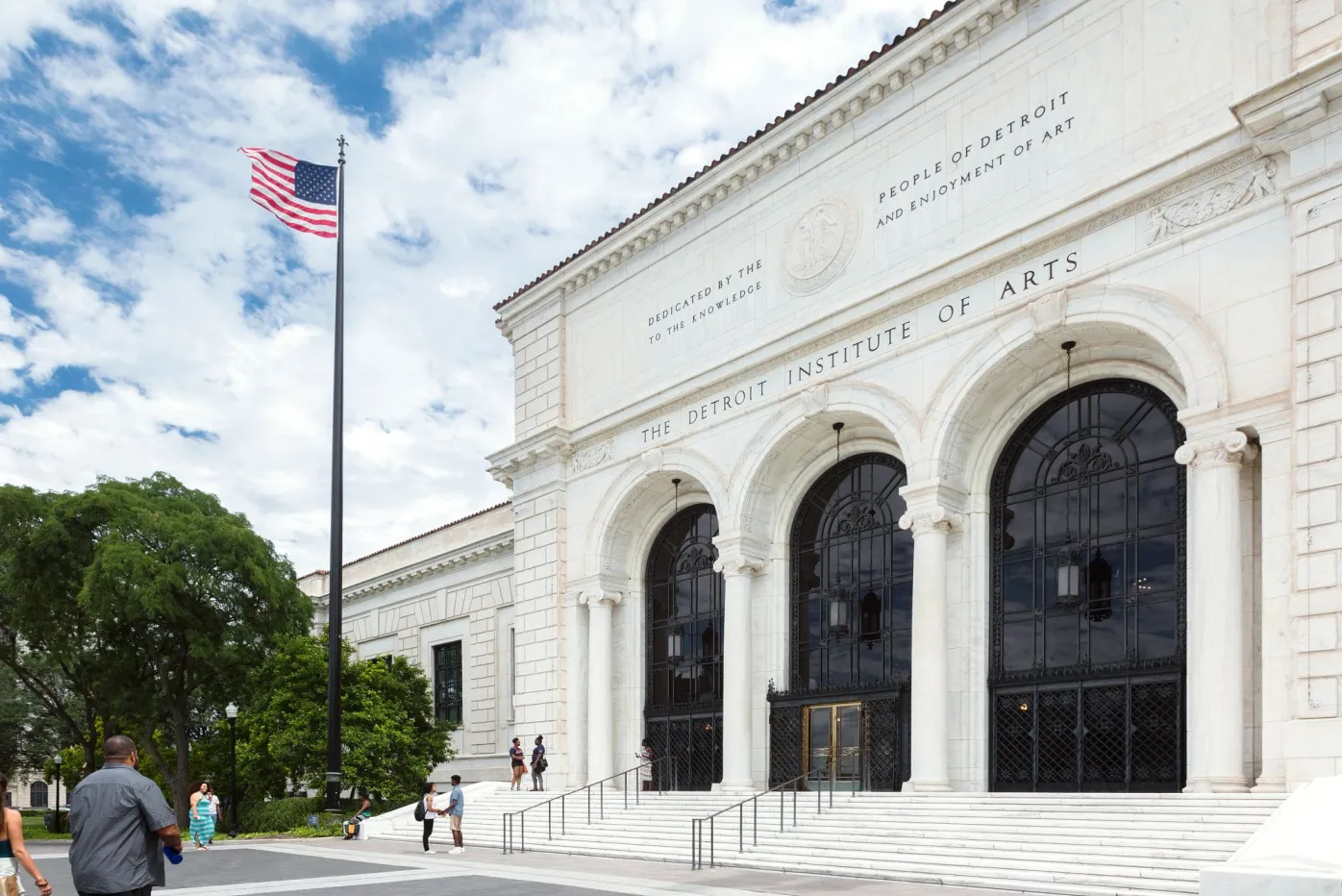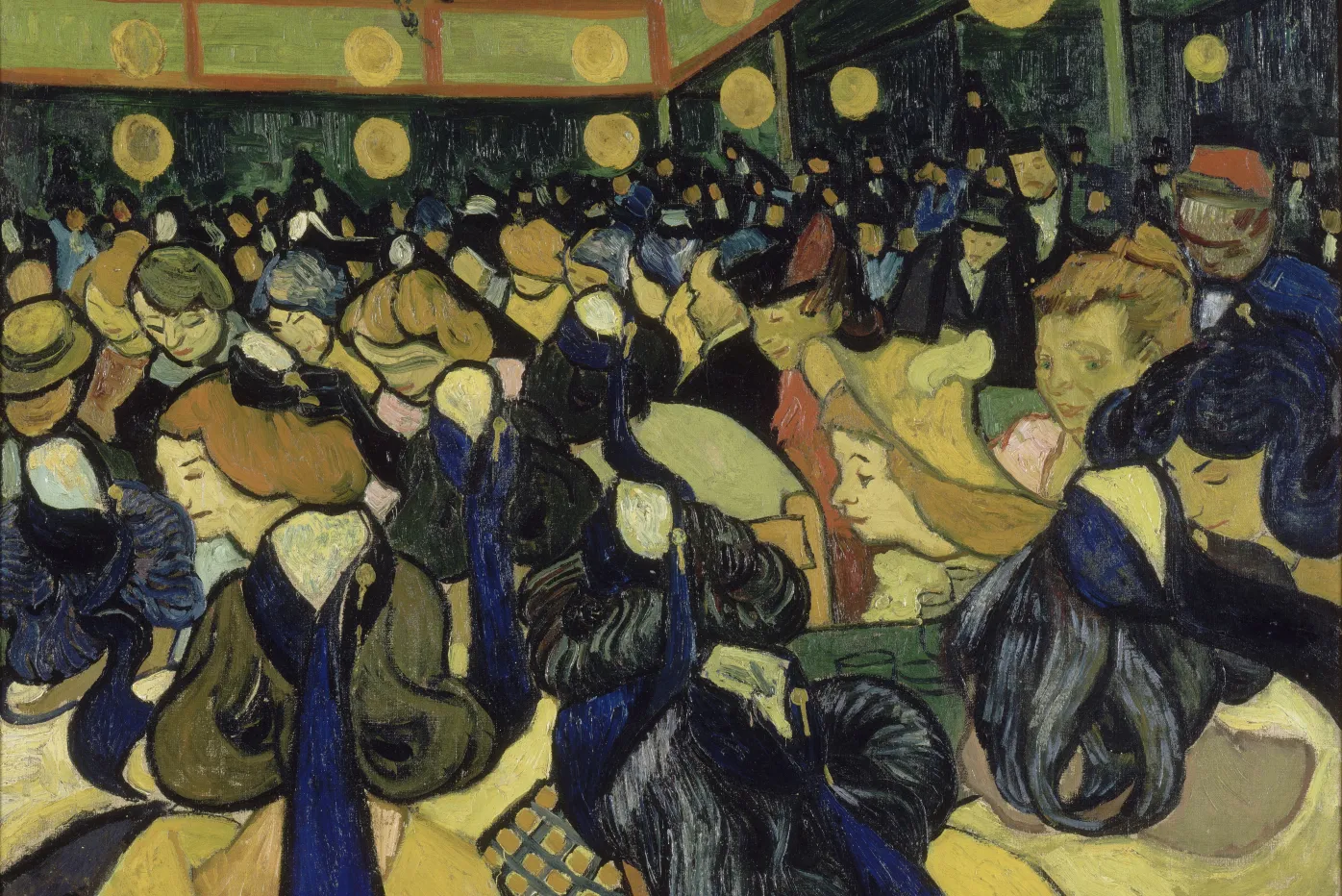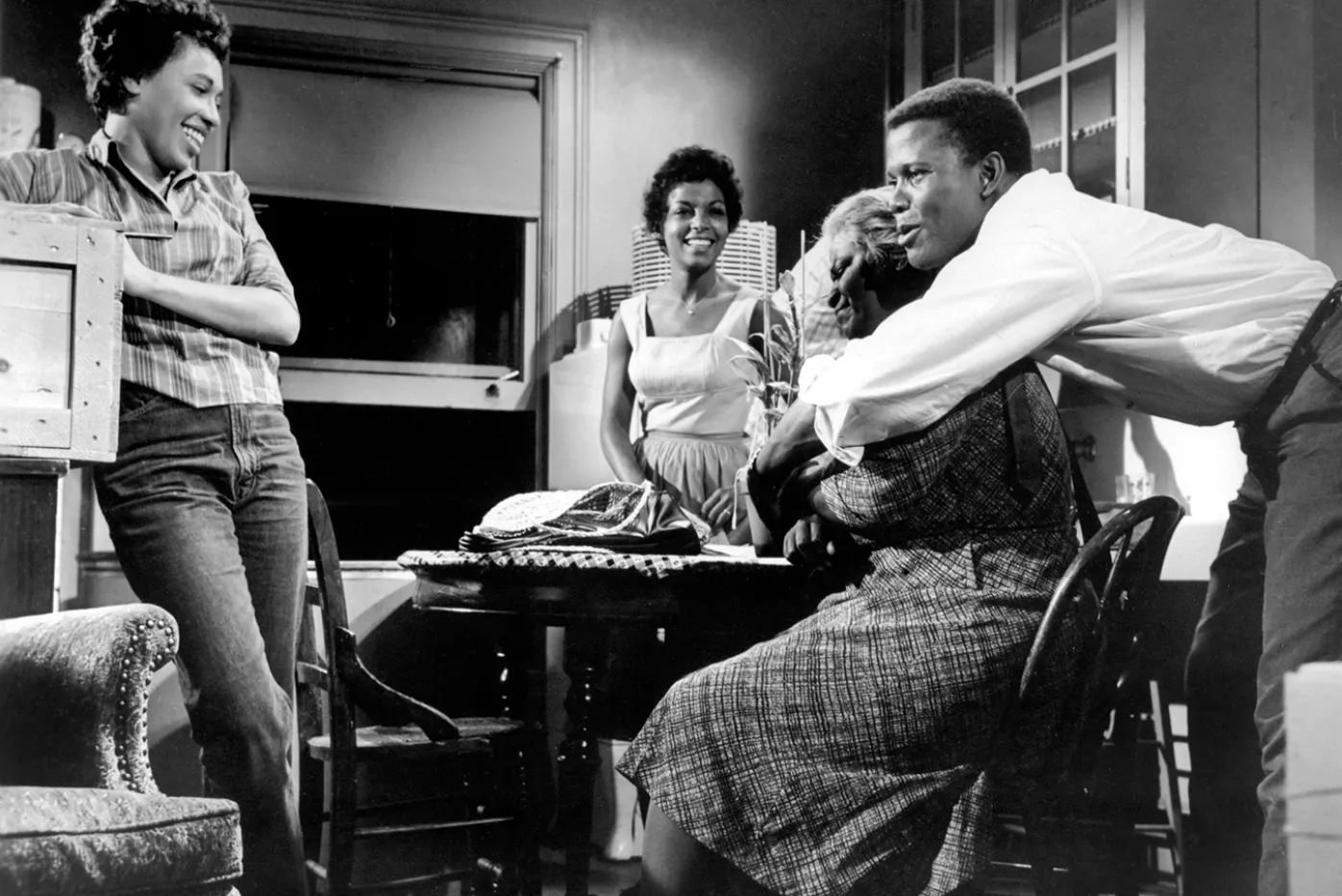How did the DIA navigate a camera-mounted drone through narrow galleries filled with fragile, priceless art? Very, very carefully.
Every day, hundreds of visitors to the Detroit Institute of Arts pull out their phones or even personal cameras and take photos and video of the masterpieces within. But only once has a drone toured the space, taking the viewer outside and inside the museum — from its beautiful grounds and Beaux-Arts facade to the top of the iconic Rivera Detroit Industry Murals, through Kresge Court and into hushed galleries. How did the idea of having a remote-controlled camera buzz at high speed past ancient artifacts and irreplaceable masterpieces come about?
It started with Adam Kosberg, the DIA’s Director, Visual Media, after he saw an exuberant video about Wrigley Field (sorry, Tigers fans) made by Minneapolis-based Sky Candy Studios that takes the viewer on a swooping tour through the city, up into the stadium, and onto the field during a game. “I’ve done several drone shoots at various museums, but only exteriors,” says Kosberg. “It occurred to me that this is a crew I would trust inside the DIA, and I thought, let’s do something that’s never been done before.
“I feel it’s my responsibility to create media that enhances accessibility, that encourages people to visit who might not believe an art museum is for them,” adds Kosberg. “And I thought a video like this could help demonstrate the wonders of this building."
Kosberg contacted Sky Candy and brought the idea to Jennifer Snyder, the DIA’s Chief Digital Officer. At first, Snyder thought he was proposing a straightforward outside shoot to capture the museum exterior, its outdoor artworks (Rodin’s The Thinker, Tony Smith’s Gracehoper) and the extensive grounds. “I said sure,” Snyder recalls. “Then he said, ‘no, I want to bring the drone inside.’”
To no one's surprise, the prospect of a remotely operated flying object buzzing through the galleries was not a slam-dunk; after all, museums are explicitly about safeguarding and protecting their collections for future generations. But after “many, many meetings,” says Snyder, the idea caught on. “I was skeptical,” says Christopher Foster, the DIA’s Director, Conservation. “And the Wrigley Field video scared me even more.”
Eventually, the group came to a compromise and decided to film drone footage only in large public spaces like Kresge Court and Rivera Court. In the galleries, the videographers used a handheld camera for their shots.
Weeks of planning followed, as museum staff chose the on- and off-limits areas. Jordan Alberino, Sky Candy’s Owner/Director of Partnerships and Operations, brought a crew to scout locations, create a shoot schedule, and calm some nerves. “This was our first museum,” he says. "It was so exciting to see everyone’s passion and hear them explain the exhibitions. I didn't realize how colossal the DIA is
“The drone pilot and I arrived a day early, walked the location, looked at blueprints, and came up with a four-to-five-minute flight plan that would keep the viewer engaged,” Alberino continues. “We showed the conservators the drone we were going to use, so they could see how light it was, and how safe. Inside the museum, you’re not dealing with variables like wind, so we’re able to get these incredible shots.” The drone itself is about a foot wide and 4 inches high, and a stripped-down camera is attached to the top to keep it as lightweight as possible.
Finally, shoot day arrived, and the weather cooperated. “The video took place over one day, starting at 8 a.m.,” says Alberino, with a team that always included a conservator on stand-by. “Exteriors look the best at sunup and sundown, so we wanted to capture those moments. We also wanted to get the Rivera murals at a specific time—between 9 and 9:45 a.m., when direct sunlight would be coming through the windows at the top of the hall and illuminating certain parts of the mural, and you get a nice flare.”
“The first shot we did was the opening shot of the film where the drone moves from the exterior of the building through the main doors into the building,” says Kosberg. “We had emphasized to the crew that they wouldn’t be able to fly 40 or 50 miles an hour past the Van Goghs, so they knew that if they were going to do anything ‘daring’ it would have to be an exterior shot. The pilot started by flying along the building over the tree line. The plan was to circle and then fly through the Gracehoper sculpture, which has a good 15 feet of clearance underneath it, so it wouldn’t exactly qualify as a dangerous shot per se. But the drone circled around and all of a sudden, the pilot flew it through the tree adjacent to the sculpture, over one branch and under another. I looked at that afterwards and I still don’t see how he had the vision to make it work.”
The shoot went off without a hitch. “We filmed on a Monday when the museum is closed, so all the people you see are staff,” says Snyder. “There’s a shot of me from the back looking at an artwork, and I’m hearing the drone, which sounds like a swarm of bees, come up from behind, and it was all I could do not to turn around and run away.”
“When you're walking around the museum, you're typically looking at things at eye level,” says Alberino. “But the Rivera murals are 20, 30 feet high, and there's just as much detail at the top as at the bottom. With the camera we were using, and the angle we were capturing, we were able to get up close and personal and show the mural to visitors like they’ve never seen it before.”
“Kresge Court and the murals are iconic,” adds Snyder. “This gave an incredible, dramatic viewpoint you would never get otherwise.”
After several months of post-production, the final product was ready.
"Museums are starting to lean into the fact that, while static images are fabulous, you don't get the look and feel of something until you do a video,” Snyder adds. “We were very lucky that the Knight Foundation provided the funding for our Visual Media department. The whole point of this video was to engage an audience who might not ever be able to step into the museum. Our audiences love video. It’s how people are learning and absorbing material, especially the younger generations and they are the DIA’s future.”
DIA fans on social media seem to support Snyder’s vision. “What a stunning, spectacular treasure we have in the DIA. You've shown it from a new fascinating, perspective that makes me want to go see it all again,” said Ruthann Bajorek on the DIA’s Facebook post with the video.
Even the conservators are seeing the impact. “I’m happy with the result,” says Foster. “I think other museums are going to see this and think, ‘hmm. Using technology is an awesome way to get people interested.’”



